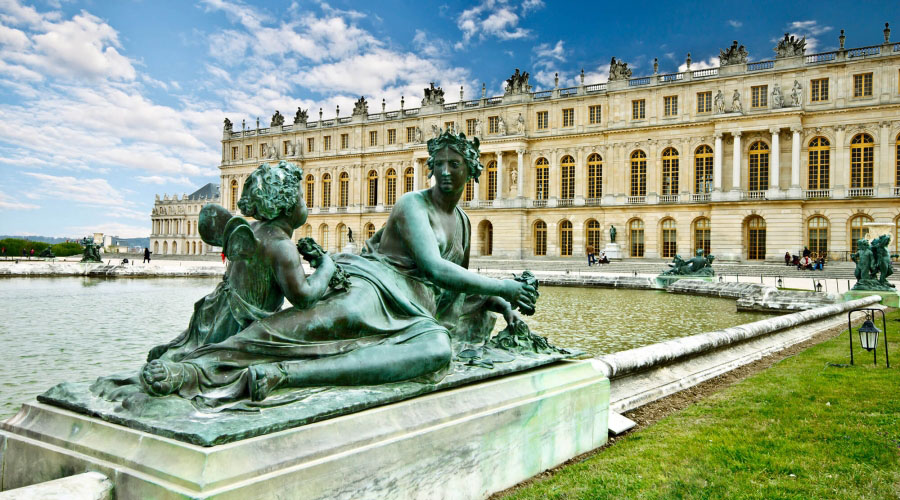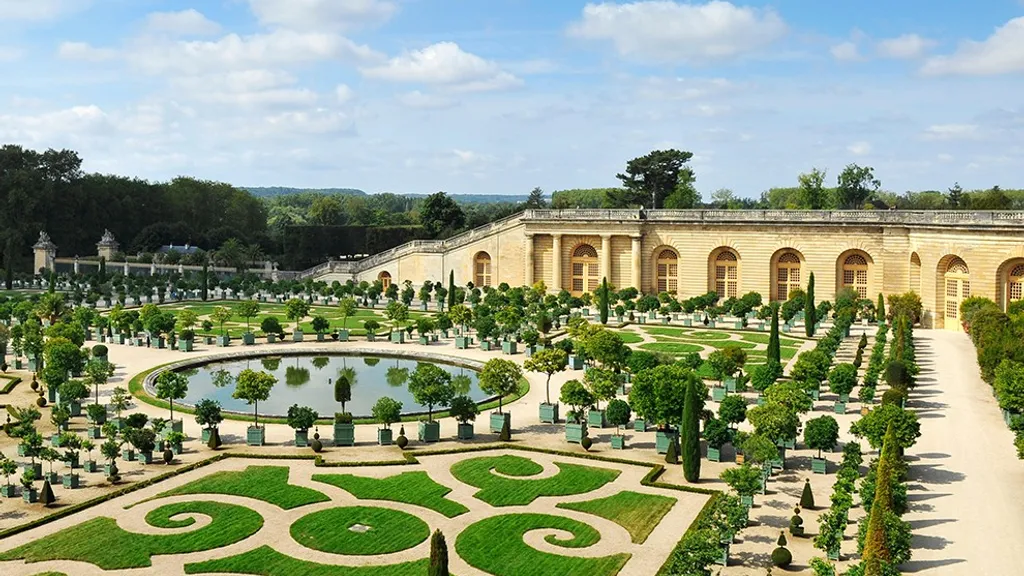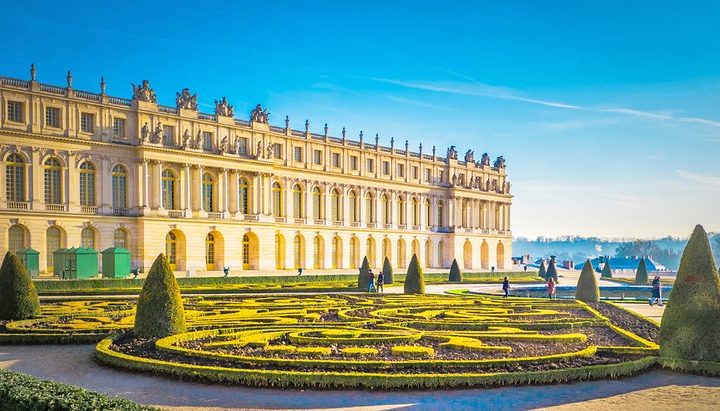Château de Versailles
The Château de Versailles stands as one of the most iconic symbols of French monarchy and an architectural masterpiece of the 17th century. Originally a hunting lodge for King Louis XIII, the château was transformed and expanded by his son, Louis XIV, into a grandiose palace that became the seat of political power in France. This historical site not only reflects the grandeur and opulence of the Bourbon dynasty but also serves as a testament to the artistic and cultural achievements of its time.
Can’t wait to visit the château? Book your Château de Versailles tour online.
Location of the Château de Versailles
Situated in the Île-de-France region, the Château de Versailles is located approximately 20 kilometers southwest of Paris. The town of Versailles has grown around the estate, setting the palace within its picturesque backdrop. This provides a picturesque backdrop that complements the grandeur of the château. Its proximity to the French capital made it an ideal location for the royal court, symbolizing the centralization of royal power.

History of the Château de Versailles
The history of the Château de Versailles begins in 1623 when King Louis XIII commissioned a hunting lodge on the site. This modest structure was later expanded by Louis XIV. He sought to create a palace that would reflect his absolute power and the glory of his reign. The transformation began in 1661, with architects Louis Le Vau and Jules Hardouin-Mansart playing crucial roles in its development.
Louis Le Vau initiated the first phase of expansion, adding two wings and creating the marble court. Jules Hardouin-Mansart further enhanced the palace with the addition of the Hall of Mirrors. He also added the North and South Wings and the Royal Chapel. The Hall of Mirrors, or Galerie des Glaces, remains one of the most iconic features of Versailles, adorned with 357 mirrors that reflect the splendor of the Sun King’s reign.
The gardens of Versailles
The gardens of Versailles, designed by André Le Nôtre, are considered a masterpiece of French formal garden design. Covering approximately 800 hectares, the gardens feature meticulously manicured lawns and parterres of flowers. They also include an extensive network of fountains and water features. The Grand Canal, a central water body, extends over 1.5 kilometers and was used for boating parties and naval displays.
One of the most notable aspects of the gardens is the use of perspective and symmetry. This creates a sense of infinite space and order. The Orangerie houses non-native plants and trees. Numerous bosquets, or wooded groves, add to the diversity and richness of the landscape. The intricate sculptures and engineering marvels of the fountains, such as the Latona Fountain and the Apollo Fountain, have made them renowned.

The interior splendor of the Château
The interior of the Château de Versailles is a testament to the artistic achievements of the French Baroque period. It also reflects the cultural achievements of that era. The State Apartments, comprising the King’s and Queen’s apartments, are lavishly decorated with gilded woodwork, frescoes, and tapestries. The King’s Grand Apartment, or Grand Appartement du Roi, includes several rooms each dedicated to a different deity from classical mythology, reflecting Louis XIV’s desire to associate his reign with divine authority.
The Queen’s Grand Apartment mirrors the layout of the King’s Apartment but features a more feminine style in its decoration. Marie Antoinette, the last queen to reside at Versailles, added her personal touch to the decor. She created the Petit Trianon and the Hameau de la Reine, a rustic retreat within the grounds of Versailles.
Versailles as a center of political power
From 1682, when Louis XIV moved the royal court to Versailles, the château served as the epicenter of French political life. The move symbolized the centralization of power and the king’s absolute authority. The court designed the daily rituals, from the elaborate ceremonies of the king’s lever (rising) and coucher (retiring) to the grand fêtes and balls, to reinforce the hierarchy. These rituals helped maintain the control of the monarchy over the nobility.
Versailles remained the seat of power until the French Revolution in 1789. The Hall of Mirrors hosted the Estates-General of 1789. This event marked the beginning of the revolution. Following the revolution, the palace fell into a state of neglect. King Louis-Philippe later restored and transformed it into a museum of French history in the 19th century.

Current status of the Château de Versailles
Today, the Château de Versailles is a UNESCO World Heritage site and one of the most visited tourist attractions in France. Due to the meticulous restoration and preservation efforts, visitors can explore its vast array of rooms, gardens, and exhibitions. Furthermore, the palace stands as a symbol of the artistic, cultural, and political legacy of the Ancien Régime.
Ongoing restoration efforts ensure that Versailles remains a testament to the ingenuity and creativity of its architects, artists, and landscapers. The château offers a glimpse into the opulent lifestyle of the French monarchy. It also serves as a reminder of the historical events that shaped modern France. Visitors can experience the grandeur of the Hall of Mirrors, the tranquility of the gardens, and the historical significance of the many rooms and galleries within the palace.
The Château de Versailles continues to captivate the imagination of people from around the world. It provides insight into one of Europe’s most influential royal courts and preserves the rich heritage of France for future generations.
Admission
Community features
Castle features
Video
Location
Official website
Featured listings














